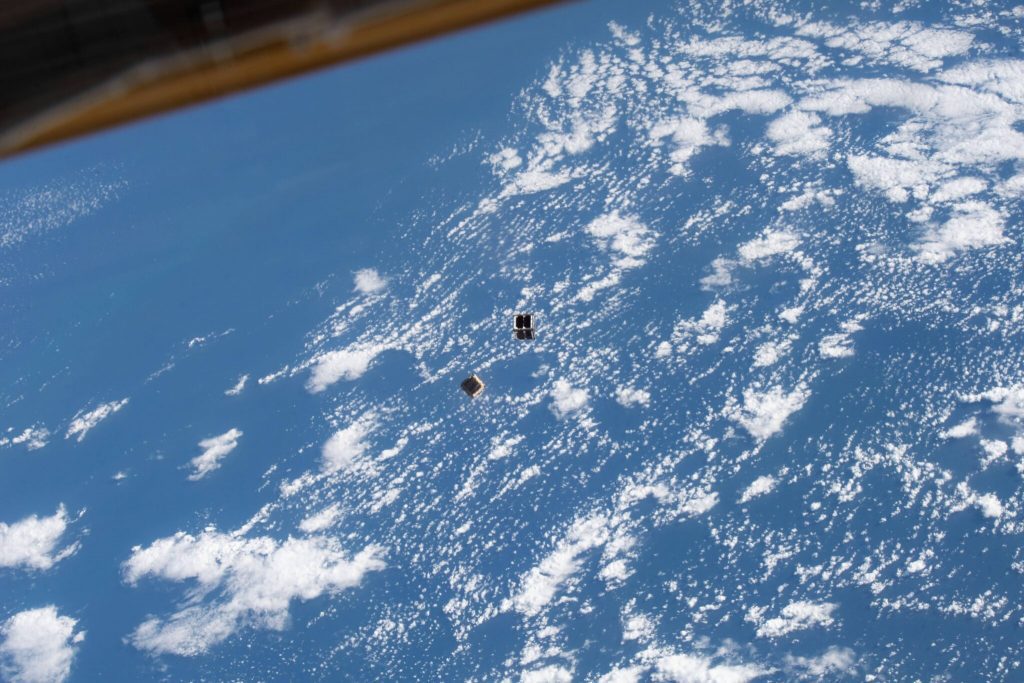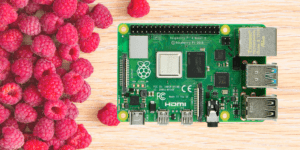Spis treści:
Comprehensive and desirable
Raspberry minicomputers are known for their capabilities, making them the first choice for electronics and programming enthusiasts. The unique design and features of Raspberry Pi boards make them ideal as the heart of systems in many different projects.
From low-complexity educational projects for beginners, to advanced computing algorithm projects, media centres, prototyping platforms, etc. They are suitable for virtually anything, so is there anything that limits the Raspberry Pi? It turns out it’s probably human imagination, as Raspberries are even able to overcome gravity and the Earth’s atmosphere!
Raspberry Pi for conquering the universe
In the face of low availability of electronic equipment, everyone is doing their best to acquire units for their projects, businesses, for fun, etc. It turns out that even the biggest players, who evoke our first thoughts about the term “electronics” or “technology”, such as NASA, are struggling with the same problem as every ordinary man – they can hardly find any equipment. With difficulties in producing and purchasing equipment, everyone seems to be looking for alternatives.

So why not use something seemingly out of the ordinary for – literally – top-level scientific projects? As you can see, it can and has been successful – students at Utah State University have built and sent into orbit a mini-satellite they made as part of a project sponsored by the NASA space agency. The device, called GASPACS CubeSat, contains a Raspberry Pi Zero minicomputer, a DFRobot Beetle microcontroller and a camera module. It provides a tool to perform basic tasks for low-budget solutions. It is also very small, like the other CubeSat devices – it is only 10 centimetres wide and is, as the name suggests, a cubic cube.
What will the mini satellite be used for?
Obviously, no one would send a Raspberry into space to occupy space in orbit for no particular reason, unless we change the subject to a Tesla Roadster that flies to Mars… Here, however, the purpose is very practical, namely the primary and most important task of the mini-satellite is to test the “aeroboom” stabilisation system, a metre-long inflatable boom. The launch of the system succeeded just after the satellite was released from the International Space Station ISS.
https://www.youtube.com/watch?v=nWhzdQvO9vohttps://www.youtube.com/watch?v=itaPgu0BkRo
Secondary objectives of this orbital journey include testing the durability of relatively low-budget hardware platforms, such as the Raspberry Pi Zero. The issue is taken into account because the mini-satellite does not have any shield to protect it from the solar wind. To emphasise the importance of the phenomenon, it is worth mentioning that on the earth’s surface we are protected from these particles by the earth’s magnetic field, without which there would be no world as we know it. The charged particles are dangerous to living organisms, but also to electronics, causing at best interference in the transmission of signals, and at worst overvoltages that can burn out the entire circuit board, making it no longer usable.
How does the Raspberry Pi work in space?
As we mentioned earlier, the heart of the mini-satellite is a Raspberry Pi Zero and there are additional parts like the camera module, an additional microcontroller. The minicomputer, of course, takes care of processing tasks and transmitting data received, for example, from its camera, which records the course of the tests. Photos from our orbit can be seen on the official social media profile of the research team – the view is absolutely magnificent!
Ok, it works, so why is there a second chip? Well, because its role is to keep the Raspberry in good shape when exposed to the solar wind. When needed, this chip turns the computer off and on to protect it from crashing. The whole thing gets its power from batteries and a photovoltaic cell, which are built into the body of the satellite.
How useful was this post?
Click on a star to rate it!
Average rating 0 / 5. Vote count: 0
No votes so far! Be the first to rate this post.




